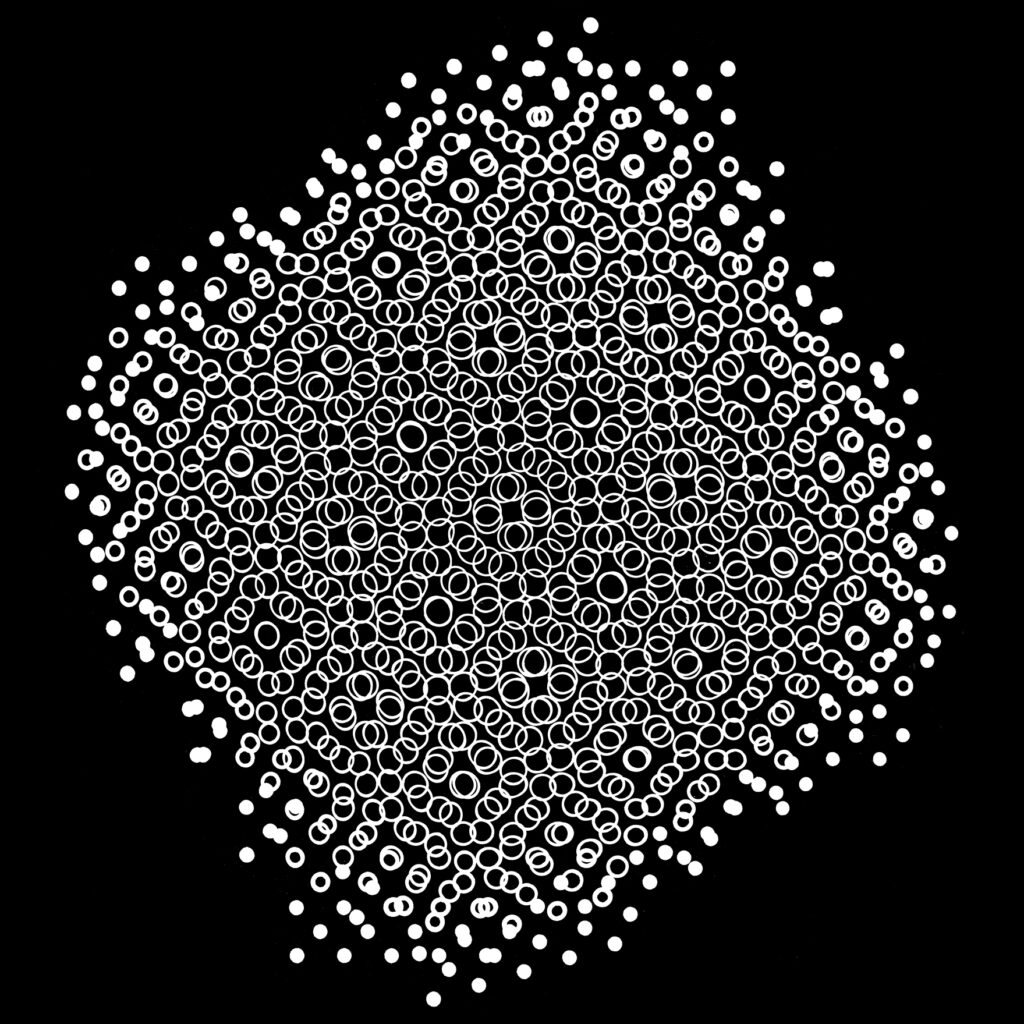
Gottfried Jäger, Lochblendenstruktur 3.8.14 D 3.5, 1967. Courtesy of the artist.
The term generative art is mostly reserved for practices in which artists construct systems containing various degrees of autonomy. This is designed to generate results that would otherwise be unlikely. In contrast, photography is understood as a situation wherein an agent, the photographer, uses a pre-existing system constructed by other agents with the sole purpose of yielding results that must always be predictable. One strand of photography wherein such conceptions of the medium prove inadequate is generative photography. This unique exploration is characterized by three qualities: (1) Extensive use of self-constructed apparatuses for harnessing technologies explicitly dedicated to the creation of photographs; (2) Uncompromising insistence the seriality principle in producing photographs; and (3) The integration of chance or randomicity as an important creative factor. This paper traces the history of generative photography from its origins in the near-forgotten philosophical movement of information aesthetics. It argues that generative photographs elucidate a concept of artistic constructivism onto which may be grafted the numerical programming of apparative art systems. Thus, generative photography, with its precision of production and concise visual expression, can be understood as the final phase of photography, or, through Max Bense’s concept of ‘programming the beautiful’, as a precursor of generative computer art.